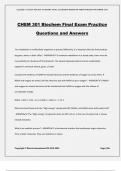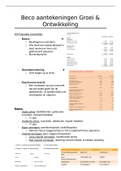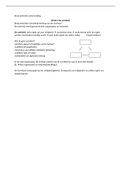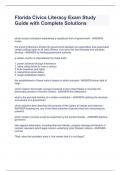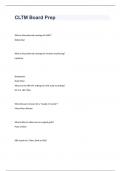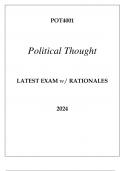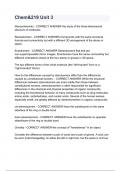Exam (elaborations)
CHEM 301 Biochem Final Exam Practice Questions and Answers
- Course
- Institution
CHEM 301 Biochem Final Exam Practice Questions and Answers For metabolism in multicellular organisms to proceed efficiently, it is important that the final products be gases, water, or both. Why? - ANSWER-To maintain metabolism in a steady state, there must be no possibility of a build-up of fi...
[Show more]
